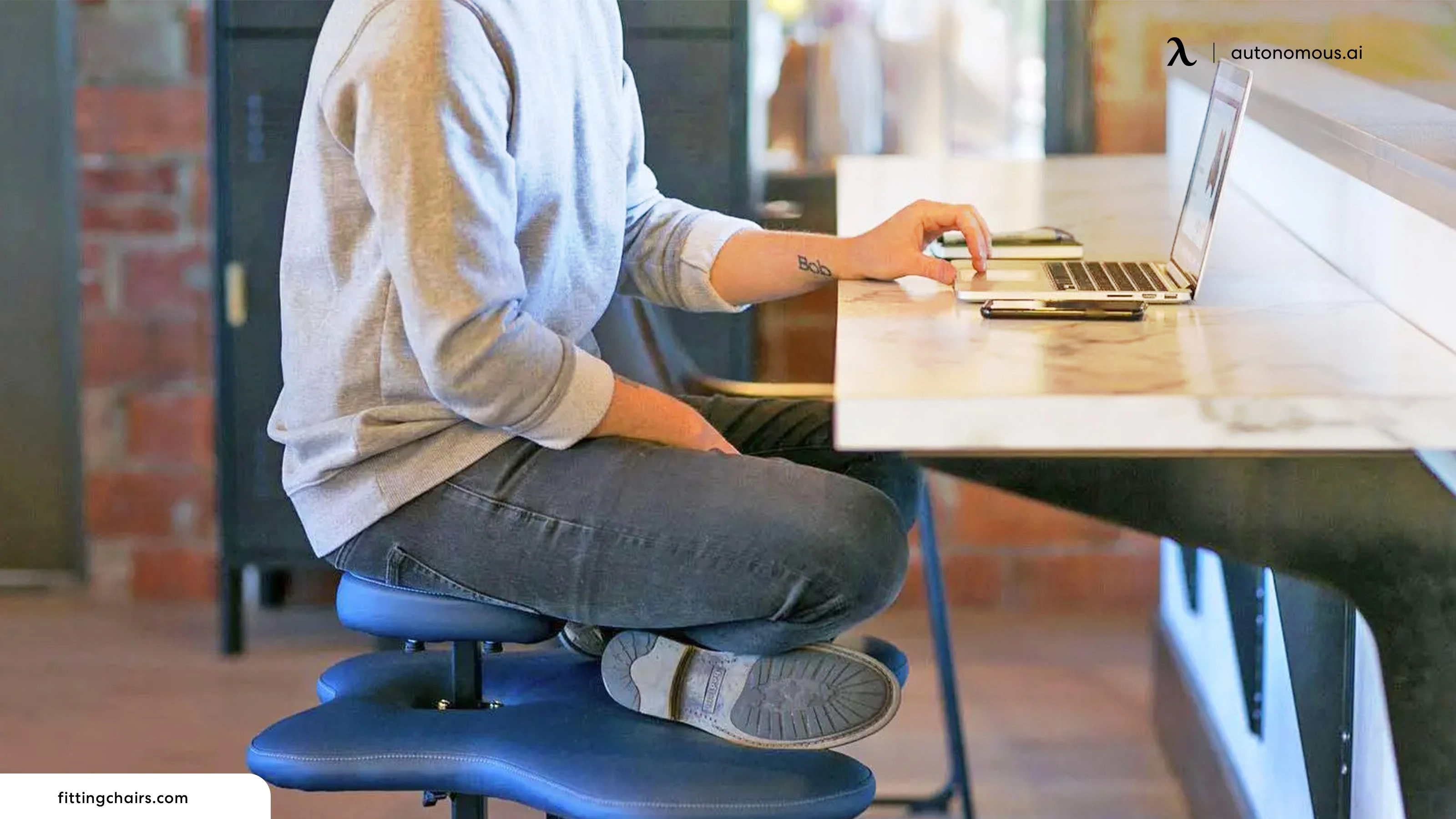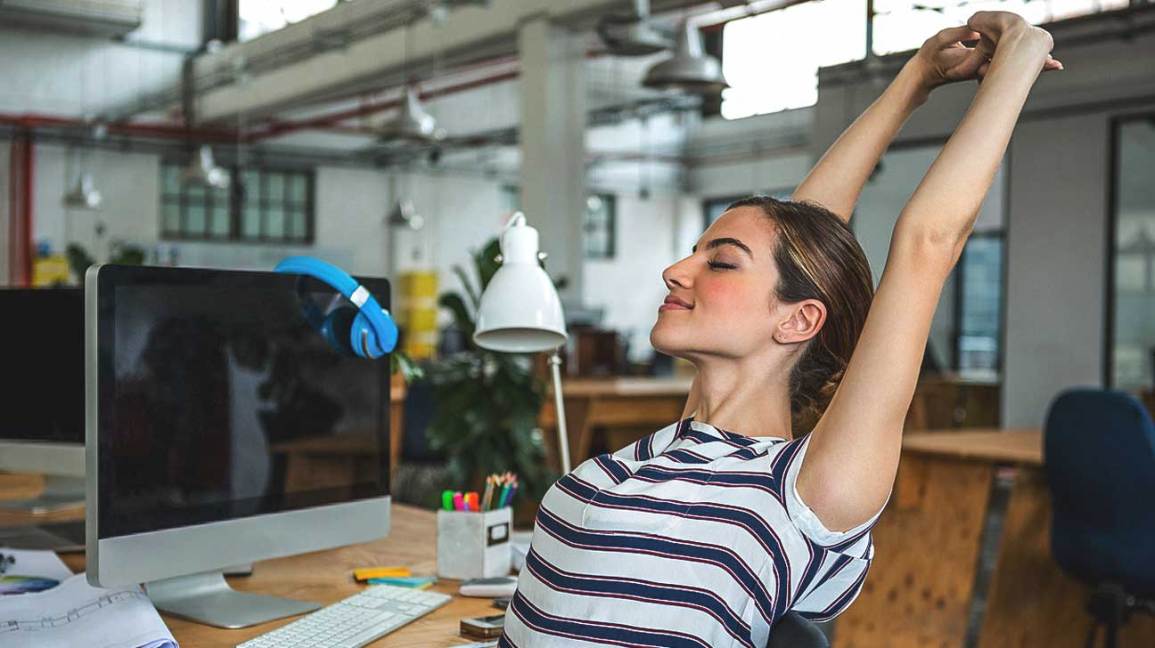Meditation poses can be done in your desk chair or on the floor, offering various benefits for relaxation and focus. Sit back, relax, and learn more about these poses that can be easily incorporated into your daily routine.
In today’s fast-paced world, finding moments of calm and tranquility can be a challenge. That’s where meditation comes in. It’s a practice that allows you to quiet your mind, reduce stress, and foster a sense of mindfulness. And the significant part is that you can do it anywhere, even in the midst of a busy workday.
Whether you’re working from home or in an office, taking a few minutes to meditate can make a world of difference. And the best part is, you don’t need any fancy equipment or a dedicated space. With just a desk chair or a comfortable spot on the floor, you can find your zen and experience the benefits of meditation. We’ll explore different meditation poses that you can try right at your desk or on the floor. From simple breathing exercises to more advanced postures, there’s something for everyone. So, let’s dive in and discover how you can incorporate meditation into your daily life, no matter where you are.

Meditation Poses On A Desk Chair
If you find yourself spending long hours at a desk, you may wonder how to incorporate meditation into your work routine. Luckily, there are several meditation poses you can do right from your desk chair. These poses not only help to improve focus and reduce stress but also promote better posture and overall well-being. In this article, we will explore two effective meditation poses that can be practiced while seated at your desk: seated forward fold and spine twist.
Seated Forward Fold
The seated forward fold is a simple yet effective way to stretch the muscles in your back and relieve tension in your spine. To perform this pose, follow these steps:
- Sit up straight in your desk chair, with your feet flat on the floor and your hands resting on your knees.
- Take a deep breath in, and as you exhale, slowly bend forward from your hips, reaching your hands towards your feet or the floor.
- Allow your head to hang, and relax your neck and shoulders.
- Take a few deep breaths while holding this pose, feeling the gentle stretch in your back.
- When you’re ready to release the pose, slowly inhale and raise your upper body back up to a seated position.
Keep in mind that it’s essential to listen to your body and only go as far as feels comfortable for you. This pose can be practiced for a few minutes whenever you need a break or want to relax your mind.
Spine Twist
The spine twist is another great pose to loosen up the muscles in your back and increase spinal mobility. To perform the spine twist while sitting in your desk chair, follow these steps:
- Sit up straight in your chair and place your feet firmly on the floor.
- Place your left hand on the outside of your right thigh, near the knee.
- As you exhale, twist your torso to the right, gently pushing against your right thigh with your left hand.
- Place your right hand on the backrest of your chair for support, and look over your right shoulder.
- Take a few deep breaths in this twisted position, feeling the stretch along your spine.
- On an inhalation, slowly release the twist and come back to the center.
Remember to repeat the twist on the other side by placing your right hand on the outside of your left thigh and looking over your left shoulder. This pose can help relieve tension in the neck and shoulders and can be practiced throughout the day to maintain energy and focus.

Meditation Poses On The Floor
When it comes to finding the perfect meditation pose, the floor can be a great option. Not only does it provide a stable and grounding surface, but it also allows for a deeper connection with the earth and your own body. There are several popular meditation poses that can be done on the floor, including the Lotus pose and Sukhasana.
Lotus Pose
The Lotus pose is one of the most well-known meditation poses, often associated with inner peace and tranquility. In this pose, you sit cross-legged on the floor with your legs fully crossed and your feet resting on opposite thighs. Your hands can rest on your knees or in your lap while maintaining an upright posture with a straight spine. The Lotus pose helps to align your energy centers and promotes a sense of calm and focus.
Sukhasana
Sukhasana, also known as the Easy Pose, is a simple yet effective meditation pose for beginners. In this pose, you sit cross-legged on the floor with your back straight and your hands resting on your knees. The Sukhasana pose allows for a comfortable and relaxed sitting position, enabling you to focus on your breath and inner thoughts without any distractions. It is ideal for those who find the Lotus pose too challenging or uncomfortable.
Alternative Meditation Poses
Meditation is a powerful practice that can bring immense benefits to our overall well-being. While the traditional crossed-leg seated posture is widely known and practiced, there are alternative meditation poses that can be just as effective, allowing individuals to find comfort and relaxation in different ways. In this article, we will explore two alternative meditation poses: the supported half-seated forward bend and standing meditation.
Supported Half-Seat Forward Bend
The supported half-seated forward bend is a beautiful option for those who prefer a more gentle and supported posture during meditation. This pose provides a deeper stretch to the hips, lower back, and hamstrings while maintaining a comfortable seated position.
Here’s how to practice the supported, half-seated forward bend:
- Begin by sitting on a folded blanket or bolster, placing it directly behind your body.
- Extend your legs in front of you, keeping them hip-width apart.
- Bend your knees slightly and slowly fold forward from your hips.
- Rest your forehead on the support in front of you, allowing your upper body to relax.
- Breathe deeply and stay in this pose for a few minutes, focusing on your breath and letting go of any tension or stress.
Standing Meditation
Standing meditation is an excellent alternative for those who find it uncomfortable to sit for prolonged periods of time or prefer an upright position. This pose allows you to cultivate a sense of grounding and stability while maintaining an active and alert posture.
To practice standing meditation, follow these steps:
- Stand with your feet hip-width apart, grounding your weight evenly through both feet.
- Relax your shoulders, lengthen your spine, and engage your core muscles.
- Gently close your eyes or maintain a soft gaze downward.
- Bring your awareness to your breath, feeling the sensation of each inhalation and exhalation.
- Allow your body to feel rooted to the earth, experiencing a sense of stability and strength.
Both the supported half-seated forward bend and standing meditation offer unique benefits and can be practiced by individuals with varying levels of flexibility. Explore these alternative poses to find the one that resonates with you, allowing you to deepen your meditation practice and cultivate a greater sense of well-being.

Frequently Asked Questions For Meditation Poses: In Your Desk Chair, On The Floor, And More
Is It Better To Meditate On The Floor Or In A Chair?
Meditating on the floor or in a chair depends on personal preference and comfort. Both have benefits; the floor promotes stability and grounding, while a chair provides support. Choose a position that allows deep relaxation and focus during meditation. Experiment to find what works best for you.
What Posture Is Most Often Used For Sitting Meditation?
The most commonly used posture for sitting meditation is the cross-legged sitting position. It helps maintain stability and attentiveness during meditation practice.
What Is The Chair’s Position For Meditation?
The chair position for meditation is a comfortable sitting posture that helps maintain a straight back and relaxed body. Sit tall with both feet grounded, hands resting on your thighs, and eyes closed or softly focused. This position promotes stability and openness and allows for deep relaxation during meditation.
How Do You Sit On The Floor For Meditation?
Sit on the floor for meditation by first finding a comfortable spot. Cross your legs, keeping your back straight and shoulders relaxed. Place your hands on your knees or in a mudra. Close your eyes and focus on your breath.
Maintain this posture for the duration of your meditation.
Conclusion
Incorporating meditation poses into your daily routine is a simple yet powerful way to find inner calm amidst the chaos of daily life. Whether you choose to practice in your desk chair or on the floor, the benefits of these poses are undeniable.
By taking just a few moments each day to bring mindfulness to your body and mind, you can enhance your focus, reduce stress, and cultivate a sense of peace and well-being. Start exploring these poses today and unlock the transformative power of meditation.

